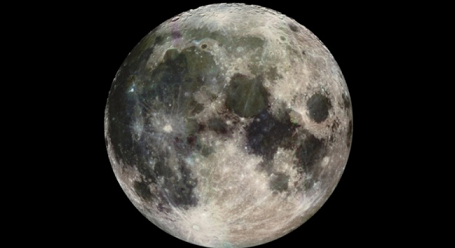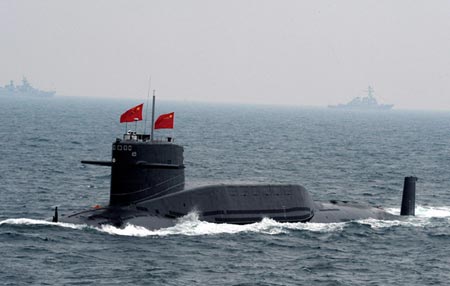
By Shakoor Rather| PTI
India's Chandrayaan-2 mission, which is on its way to the Moon, may be up for a pleasant surprise when it lands a rover on the unchartered lunar south pole as latest studies suggest that there may be way more ice water in the region than previously thought.
The Moon's south pole region is home to some of the most extreme environments in the Solar System: it's unimaginably cold, massively cratered, and has areas that are either constantly bathed in sunlight or in darkness.
This is precisely why NASA says it wants to send astronauts there in 2024 as part of its Artemis programme.
On July 22, the Indian Space Research Organisation (ISRO) launched Chandrayaan-2 on-board its powerful rocket GSLV-MkIII-M1 from the spaceport of Sriharikota in Andhra Pradesh.
With this, Chandrayaan-2 began its historic 48-day journey to the south pole of the Moon, where it will begin its quest for water.
"Moon's south pole region has more shadow than the north pole region, and there are possibly some permanent shadowed region, for example, in the craters, called cold trap," said Sudip Bhattacharyya, associate professor at Mumbai's Tata Institute of Fundamental Research (TIFR).
"So it is more likely that water, in the form of ice, and some other volatile elements are preserved and will be found in the south pole region," Bhattacharyya, who was not involved in the studies, told PTI.
Researchers at the University of California, Los Angeles in the US, describe their study of similarities between craters on Mercury and those on the Moon.
In their paper published in the journal Nature Geoscience, they report evidence for thick ice deposits inside permanently shadowed simple craters on Moon.
"We measured the depth/diameter ratio of approximately 2,000 simple craters near the north pole of Mercury using Mercury Laser Altimeter data. We find that these craters become distinctly shallower at higher latitudes, where ice is known to have accumulated on their floors," researchers wrote in the paper.
A parallel investigation of about 12,000 lunar craters using NASA's Lunar Reconnaissance Orbiter (LRO) data reveals a similar morphological trend near the south pole of the Moon, which the scientists conclude is also due to the presence of thick ice deposits.
"We find that previously detected surface ice deposits in the south polar region of the Moon are spatially correlated with shallow craters, indicating that the surface ice may be exhumed or linked to the subsurface via diffusion," researchers said.
The family of lunar craters that we identify are promising targets for future missions, and may also help resolve the apparent discrepancy between the abundance of frozen volatiles on Mercury and the Moon, they said.
"This is important not only for water, but also to study a fossil record of the early Solar System, and to understand the linked history of the Earth-Moon system. Chandrayaan-2 lander is supposed to be the first to have a soft landing in this region," Bhattacharya added.
Researchers at NASA's Goddard Space Flight Center in the US noted that in the most enticing feature of this southernmost region is the craters, some of which never see the light of day reach their floors.
As a result of the permanent darkness, LRO has measured the coldest temperatures in the Solar System inside these craters, which have become known as perfect environments for preserving material like water for eons, they said.
In a paper published in the journal Geophysical Research Letters, NASA scientists said that it turns out that despite temperature that dips to minus 233 degrees Celsius and can presumably keep frost locked in soil virtually forever, water is slowly escaping the topmost, super thin layer of the Moon's surface.
"People think of some areas in these polar craters as trapping water and that's it," said William M Farrell from NASA's Goddard Space Flight Center.
"But there are solar wind particles and meteoroids hitting the surface, and they can drive reactions that typically occur at warmer surface temperatures. That's something that's not been emphasised," Farrell said.
After being the first to gather evidence of water on the surface of the Moon, with Chandrayaan-1, ISRO plans to take those experiments further by mapping the extent and distribution of water.
According to ISRO, a sample of "primeval water" could pave the way for major findings on the origin of water on the Moon.
Bhattacharya noted that the lander and rover together will have five types of instruments to measure the surface and atmospheric compositions, surface physical properties and seismic activities, which will undoubtedly be the first to provide some crucial knowledge.
Scientists say while it's important to consider that even in the shadowed craters water is slowly seeping out, it's possible that water is being added, too.
Icy comets that crash into the Moon, plus the solar wind, could be replenishing it as part of a global water cycle.
To confirm his team's calculations, Farrell said, a future instrument capable of detecting water vapour should find, above the Moon's surface, one to 10 water molecules per cubic centimetre that have been liberated by impacts.
For forthcoming science and exploration, the scattering of water particles could be great news, he said.
 Previous Article
Previous Article












The Indian Air Force, in its flight trials evaluation report submitted before the Defence Ministry l..
view articleAn insight into the Medium Multi-Role Combat Aircraft competition...
view articleSky enthusiasts can now spot the International Space Station (ISS) commanded by Indian-American astr..
view article